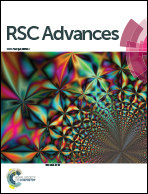Depressed haze and enhanced solar modulation capability for VO2-based composite films with distinct size effects
Abstract
For decades, scientists have devoted themselves to developing vanadium dioxide (VO2) films for thermochromic smart windows, but there remains a major challenge to their large-scale implementation owing to their limited solar modulation ability. Here, we show a new method for improving their solar modulation ability via increasing optical switching in the visible region upon phase transition. VO2-based composite films that exhibited reduced haze (haze555 nm down from 46.5% to 2.2% @RT), improved luminous transmittance (up from 9.6% to 38.5% @RT) and enhanced solar modulation ability (ΔTsol up from 8.1% to 16.9% @RT) have been fabricated by a convenient and controllable approach. With this method, the mean sizes of VO2 particles can be easily tuned from 150 nm to 40 nm by varying the preparation parameters. Via a combination of the optical transmittance spectrum and Mie calculations, we first observed the behavior of optical switching in the visible region upon phase transition, which is size-dependent. Moreover, distinctive size effects on variations in the band gap energy and specific interband transitions were studied based on the absorption spectra of VO2 composite films.


 Please wait while we load your content...
Please wait while we load your content...